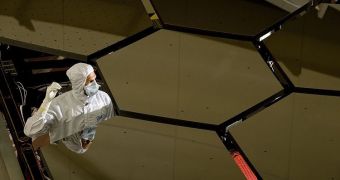As the economic crisis and austerity measures are slowly chipping away at the American space agency's annual budget, the future of flagship missions destined to study deep space is coming under question. The main issue is that no clear, acceptable solution is currently in sight.
By 2020, NASA has big plans for its space exploration program, both with manned and unmanned spacecraft. At this point, the future of many of these missions is being put under a serious question mark, since the agency is very likely to have no money to support its own plans over the next decade.
At this point, the organization is operating four flagship missions: the Hubble Space Telescope, the Chandra X-ray Observatory (CXO), the Mars Science Laboratory (MSL), and the $8.8 billion James Webb Space Telescope (JWST).
The JWST is currently under construction, and is scheduled to be launched by 2018. However, its price tag has been getting heftier by the year, primarily due to poor management early on in the project. Last year, the observatory narrowly escaped being canceled altogether.
California Institute of Technology (Caltech) astronomer Chris Martin, the chair of the NASA Cosmic Origins Program Analysis Group, says that the space agency is currently being backed up into a corner, and forced to choose between missions that are all useful and worthy, Space reports.
During a conference held on January 10 in Austin, Texas, at the 219th meeting of the American Astronomical Society (AAS2012), he told attendants that NASA has now reached a point where it can only afford to launch a flagship mission such as the JWST once every two to three decades.
“It's not just astronomy. If the government doesn't balance its books and impose some fiscal discipline, we won't have any money for any big projects, including those in astronomy,” Pennsylvania State University astronomer James Kasting explains.
He is also the chair of the NASA Exoplanet Exploration Program Analysis Group. “We're right on the border of finding Earth-like planets. We just need some technology money, and then we could fly this mission. If money weren't an issue, there are such obvious reasons, scientifically, to go do it,” he adds.
The issue with flagship missions is that their complexity usually drives up their costs well above the $1 billion mark. The MSL took 2.5 billion dollars to complete, and the JWST will take $8.8 billion, if it's ever completed.
But these hefty price tags are not without merit. The MSL rover Curiosity is the most advanced explorations robot ever built, weighing nearly a ton and being propelled by a nuclear engine. On the other hand, JWST will be able to see nearly everything in the Universe.

 14 DAY TRIAL //
14 DAY TRIAL //